Continue reading or jump ahead:
What is customer lifetime value (CLV)?
Customer lifetime value (CLV or CLTV) is the total revenue a business can reasonably expect to generate from a single customer throughout the course of the business relationship.
This metric measures the total amount of money a customer has spent (or is predicted to spend) on your products during their time with you. The longer your customer continues to purchase from your company, the greater their lifetime value becomes.
During my 14 years in customer success, I’ve learned that keeping customers engaged and meeting their needs makes all the difference when it comes to CLV. If they feel like a product is essential and the service stellar, customers are more likely to stay with you (and may even spend more).
Customer Lifetime Value Models
Customer Lifetime Value is typically measured with one of two models: Predictive CLV or Historical CLV.
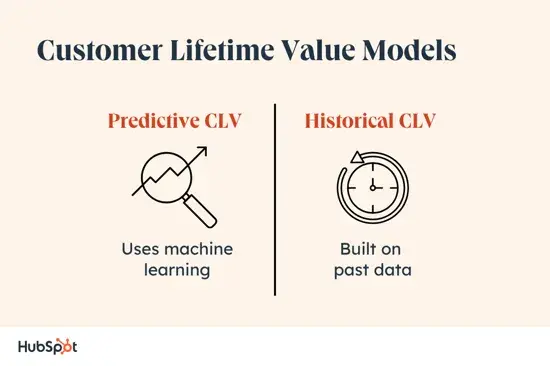
Predictive Customer Lifetime Value
The predictive CLV model uses many factors (including historical data) to predict the buying behavior of existing and new customers. The math can be complicated, often involving regression or machine learning.
Predictive CLV isn’t just looking at transactions, though; it should be inclusive of customer behaviors and interactions. Ideally, predictive CLV algorithms factor in customer data, statistical modeling, and scenario analysis.
Using the predictive model for customer lifetime value helps you better identify your most valuable customers, the product or service that brings in the most sales, and how you can improve customer retention.
Predictive CLV Model Pros and Cons
If you’re looking for predictability and future forecasting, this is the model for you.
While predictive models are more complex and require data preparation and analysis, this model can offer your business more detailed insights. However, your team will need model will large amounts of historical customer data to train the model. I know that’s not always easy if your data is siloed across departments. Plus, you’ll need a software or specialist to get everything set up properly.
However, if you have the bandwidth and resources to use predictive modeling, you’re likely to see measurable ROI. This model can easily identify distinct customer segments for you to target.
Predictive CLV adapts to changing market conditions and predicts future customer behaviors. In my opinion, this foresight makes predictive CLV a more impactful number for your business. As a success leader, I find the ability to forecast during tough markets worth the extra effort.
However, if you don’t have the internal resources, historical CLV can be a more manageable calculation offering other helpful insights.
Best for: Businesses with data and analytics teams, businesses with complex and diverse customer journeys, and businesses with multiple products and services.
Historical Customer Lifetime Value
The historical model uses past data to predict CLV without considering whether the existing customer will continue with the company or not.
With the historical model, the average order value is used to determine the value of your customers. For example, if you buy the same $7 coffee once a week at your local coffee shop for 2 years, your CLV for that coffee shop would be $728 ($7 X 108 weeks = $728).
If you have access to buying data, anyone can do this calculation. I may not even need a dedicated software. A well-built spreadsheet or calculator can do the trick.
So, which CLV model should you choose for your business? That depends on whether your business is focused on pre-existing data or trying to figure out future behavior. I’ve listed a few pros and cons for each model below to help you decide.
Historical CLV Model Pros and Cons
If you’re a small business or just starting your CLV measuring journey, the historical CLV model may be the best fit for you. I find historical CLV significantly easier to calculate. Beyond that, this calculation relies on past customer data that you likely already have. No need to
Beyond that, I’ve found historical CLV straightforward to interpret. The resulting number can give you a nice foundation for your CLV. That’s especially helpful for new businesses with limited insight into customer behavior or small businesses that have yet to develop a robust data strategy.
However, historical CLV is less robust and offers fewer actionable insights than predictive CLV. Plus, this model doesn’t work as well for complex customer journeys that span multiple channels.
At the end of the day, I find that this model will give you what you need to get started with understanding your CLV and targeting those high-value customer segments. That’s a great start.
Best for: Small businesses, businesses with specific time-bound customer interactions, or those just starting out with CLV modeling.
Why is customer lifetime value important?
- CLV helps you target your ideal customers.
- Increasing CLV can increase revenue and retention over time.
- CLV can help you find issues so you can boost customer loyalty and enhance the customer experience.
- Increasing CLV can help reduce customer acquisition costs.
- CLV can simplify financial planning.
- CLV trends can show you how to improve your products and services.
In my experience, CLV allows businesses to make more informed decisions. With this information, success teams can also build a strategy focused on growing customer relationships.
CLV also helps you understand the growth and revenue of customers over time. This
metric is important to any business because it can help your business:
- Reduce churn.
- Improve strategic decision-making.
- Streamline marketing resources.
For example, I can use customer lifetime value to find the customer segments that are most valuable to my company and then create marketing strategies specific to those segments.
Let’s dig into why we should be measuring CLV.
1. CLV helps you segment and target your ideal customers.
Knowing CLV has helped me find specific customers that contribute the most revenue to our business, making it easier to segment audiences by the value those customers bring. I’ve segmented customers based on profitability, customer needs, preferences, or behavior.
Once I’ve identified these customer segments, I can then create tailored outreach strategies and a unique customer journey for them that focuses on retention and expansion.
Armed with that knowledge, you can also develop a customer acquisition strategy that targets new customers who will spend the most at your business. I like to personalize their customer journey to attract and retain them and effectively allocate resources to get the most value from my efforts.
When segmenting your existing customers, your strategy should include an easily identifiable way to categorize those customers. Your CS team needs to know which customers fall into this category so they can create a strategy of their own.
I’ve seen these customers labeled as “PTE” (propensity to expand), “HVC” (High Value Customers), or “HPC” (High Potential Customers). Whatever label you choose, make sure your CS teams are looped in so that customer success managers know which accounts fall into this segment.
Pro tip: Do you have a digital CS team? This is a great place to pull them in. Now that these existing customers have been segmented, you can curate personalized digital experiences for them that differ from the rest of your customer base.
Maybe these customers get a more personalized email campaign and in-app experience for new product releases. Maybe you invite them to a special webinar with one of your product managers where they get an intimate look at the new feature and its use cases.
Note: Be careful not to overlap with marketing initiatives dedicated to the same segment of customers.
Don’t have a digital CS team? Marketing is the obvious next choice to step in, but product-led growth motions can also tailor their efforts to these segmented customers.
2. Increasing CLV can increase revenue and retention over time.
When you focus on increasing your CLV, you’re targeting those identified customers. You can now encourage repeat purchases. You’re also better able to find specific cross-selling and upselling opportunities to turn them into repeat purchasers.
Additionally, I’ve used CLV to identify churn risk and deploy retention strategies. For example, if my CLV model shows that the majority of customers who churned after 6 months didn’t have a specific feature launched, then I can put strategies in place to help drive adoption of that feature. That helps ensure value realization.
Ensuring your CLV findings shape your customer’s post-sale journey is key. In the example above, if I’ve identified that a specific feature not being launched by 6 months post-sale attributes to churn, that requires action from multiple teams such as CX, onboarding, and customer success or support.
On the flip side, let’s say I find that most multi-year contracts include the adoption of a specific “sticky” feature. I’d want to ensure customers use that feature so that I can drive longer CLV.
I could also loop in digital CS or marketing. I could partner with these teams to create an adoption motion for that sticky feature, turning it into a natural part of the post-sale customer journey.
3. CLV can help you identify issues so you can boost customer loyalty and enhance the customer experience.
Having the CLV data is great, but ensuring that you act on it is key. These insights can help you stay ahead of the competition by addressing any issues that arise.
CLV helps you understand customer behavior, preferences, and spending patterns. With this analysis, you can improve your data-driven decision-making. This leads to more personalized marketing strategies for growth.
For example, say my CLV is low. I can work to optimize my customer support strategy or loyalty program to better meet customer needs. Or, I can optimize a new product to attract higher-value customers.
Pro tip: I’ve also seen strategies that include tagging these segmented customers in a CRM. This practice makes sure high-value customers get priority support when they create a ticket.
For loyalty initiatives, I also recommend engaging your customers in a community where they can network with others in their industry, find answers to their questions quickly, and share success with your product. That leads to my next point.
4. Communities are also a great place to find customers that you can highlight as success stories and offer them speaking or collaboration opportunities.
As a CSM, I’ve tapped customers from my book of business who were doing something unique or wildly successful with our product. I’ve then co-presented best practices webinars with them. This makes our customers feel good about their success, which in turn makes them feel more connected and loyal to your brand.
Beyond that, these webinars inspire other customers who attend. They’re able to learn new ways to drive success with our product, leading to more value realization and retention!
4. Increasing CLV can help reduce customer acquisition costs.
We already know that acquiring new customers can be costly, and it's less expensive to retain a customer than it is to acquire a new one. If you can keep a customer happy long-term, then you can improve their value to the business.
Additionally, you can use your CLV data to focus on acquiring the right customers. Your CLV model lays out criteria for what a long-term, profitable customer looks like for your business. Your marketing team can use that criteria to target similar customers.
I’ve seen this strategy result in long-term value for businesses, compared to spending budget targeting potential low-value customers. Teams can then maximize their efforts and direct marketing spend toward acquiring customers that your data shows will be worth the investment.
You can also use your customer lifetime value data to create post-sale experiences focused on customer loyalty and word-of-mouth referrals. Data shows that customers acquired through referrals cost less to acquire, stay longer, and have a higher lifetime value. Using your CLV data to drive referrals just increases your future CLV further — it’s a win-win!
Pro tip: Don’t shy away from rewarding your existing customers for their loyalty. One way I’ve seen this is by offering specific rewards, discounts, and promotions to this segment of customers. This can look like discounts for early renewals or free access to new paid features. I’ve also seen companies offer perks to customers who write reviews on software review sites.
5. CLV can simplify financial planning.
The financial health of a business is often the main concern for CEOs and business owners.
Customer lifetime value helps you get a clear picture of your customers' relationship with your business and products. Think of it like a financial checkup.
Your CLV can offer insights into future revenue streams and changes in customer behavior. This allows your business to implement data-driven strategies around customer acquisition and retention. CLV helps you reliably forecast revenue and plan the financial future of your business, thus allowing you to make more accurate predictions about future cash flows.
6. CLV trends can show you how to improve your products and services.
Understanding CLV can give you a better understanding of which products or services benefit customers. With insights from your CLV, you can see which users stay and what features they interact with. This may guide you to look at customer feedback and behavior, update pain points, or change your approach to product development.
Lifetime value data can help you find where to make key improvements that align with customer needs and boost satisfaction. This not only strengthens customer loyalty but also differentiates your company from competitors.
Now that we understand the importance of customer lifetime value, let's talk about the formulas used to calculate customer lifetime value.
Customer Lifetime Value Formula
The customer lifetime value formula is Customer Lifetime Value = Customer Value x Average Customer Lifespan. The CLV result is the revenue you expect an average customer to generate during their relationship with your business.
Typically, lifetime value (LTV) calculates the overall value of all customers. But, customer lifetime value (CLV) can also focus on the business value of specific customers or groups of customers.
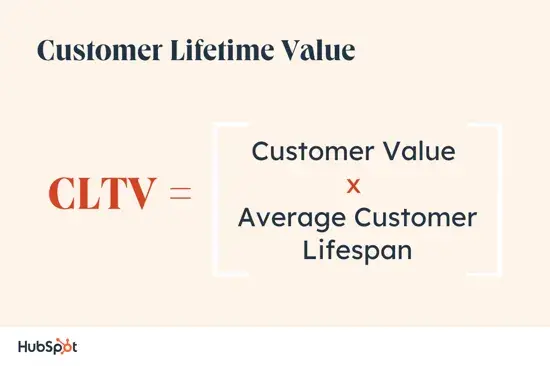
The formula above is the standard formula to calculate CLV. But finding this important figure can be more complicated than it looks.
But using this free customer service metrics calculator, you have clear formulas to help find the data you need and calculate LTV for your business.
Keep reading, or jump to the formula(s) you're looking for below:
How to Calculate Customer LTV
Customer Lifetime Value = (Customer Value x Average Customer Lifespan). To find CLTV, calculate the Average Purchase Value x Average Number of Purchases = Customer Value. Once you calculate the average customer lifespan, you can multiply that by customer value to determine customer lifetime value.
You can see both formulas below:
- Customer Value = Average Purchase Value x Average Number of Purchases
- Customer Lifetime Value = Customer Value x Average Customer Lifespan
In order to find customer value, we have to talk about average purchase value. Let’s dive in.
Customer Lifetime Value Metrics
There are many different ways to approach the lifetime value calculation. Keep reading to get an understanding of the most common CLV values. Then, analyze the variables that contribute to each to better serve your business needs.
Average Purchase Value
To calculate average purchase value, divide your company's total revenue in a period (usually one year) by the number of purchases throughout that same period.

Average purchase value helps you see the average amount of revenue each customer generates during a period. Analyzing this number also shows you:
- Opportunities to increase the value of each transaction.
- New options for cross-selling and upselling.
- Whether your pricing and packaging strategies are working.
This data helps you find new and viable products or services and other strategies to increase value per transaction and revenue.
Average Purchase Value Challenges
Challenges that come up while calculating average purchase value include:
- Getting accurate and comprehensive data on individual customer transactions.
- Inconsistent data across multiple channels or platforms.
- Seasonal fluctuations in customer spending behavior.
- Inconsistent purchasing patterns.
- Variable customer segments or groups can skew data.
Tips for Calculating Average Purchase Value
When trying to figure out average purchase value, I recommend using a reliable CRM system that combines customer transaction data from different sources. With this tool you may also be able to automate data collection for consistent transaction data.
Be sure to regularly audit and clean up data to remove duplicates and errors. You should also review segment criteria to make sure customer groups are accurate.
Average Purchase Frequency Rate
To calculate the average purchase frequency rate, divide the number of purchases by the number of unique customers who made purchases during that period.
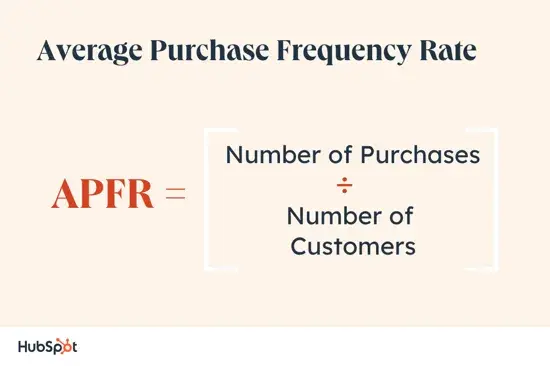
Recent research says that a 5% customer retention increase can create a 25%+ increase in profit. Average Purchase Frequency Rate is essential for calculating CLV because it shows you how often customers make repeat purchases. This metric also offers insights into:
- Customer engagement and loyalty.
- Trends in customer behavior over time.
- Churn reduction.
- Future revenue streams.
Average Purchase Frequency Rate Challenges
Like average purchase value, inconsistent or incomplete data can also distort your purchase rate numbers. Other challenges include:
- Purchase cycle timing, which can get skewed by industry trends or product releases.
- Changing customer buying patterns.
- Seasonality.
Tips for Calculating Average Purchase Frequency Rate
I recommend tracking and analyzing customer data to capture changing buying patterns. You can then regularly review and update customer segmentation based on how customer behavior shifts. I’ve also seen personalized promotions to inspire customers to spend more consistently.
Pro tip: Conduct customer surveys or interviews for insights into reasons behind changing purchase patterns.
Customer Value
To calculate customer value, figure out the average purchase value for your products. Then, calculate the average number of purchases per customer (also called purchase frequency rate). When you multiply these two figures, it will give you the customer value.

Customer value makes it easier to find the customers who have the most impact on your revenue. You can make more effective decisions when you know what each customer is bringing to your business.
Customer value is also important because it gives you what you need to segment customers by their purchasing habits. Segment insights help you create more targeted, customized experiences for your top customers.
Customer Value Challenges
- Data sources must be reliable, properly integrated, and accurately reflect the monetary value of each customer.
- Estimating customer lifespan can be difficult as many businesses have a wide range of customer retention rates.
- Factors such as brand loyalty and referrals can be difficult to calculate. So, you may need extra qualitative and quantitative data to calculate customer value.
- Sudden unforeseen issues, like the inability to handle a spike in customer service requests, may occur and can significantly impact CLV. You need to perform regular root cause analyses to pinpoint underlying problems and fix them before they blow out of proportion.
Tips for Calculating Customer Value
When I think about customer value, I always look at my CRM to confirm data accuracy. I pair those insights with customer feedback and sentiment that I gather through reviews. Social listening has been a helpful tool, gathering customers’ unfiltered thoughts on how we can improve.
Pro tip: Create a consistent process for assigning monetary value to each customer based on their transaction history. Combine financial systems with customer data to show the monetary value of each customer, like these finance integrations.
Average Customer Lifespan
To calculate the average customer lifespan, start by figuring out the average number of years a customer stays active with your company. Once you have your customer lifespan, you'll divide that by your total customer base to get the average.
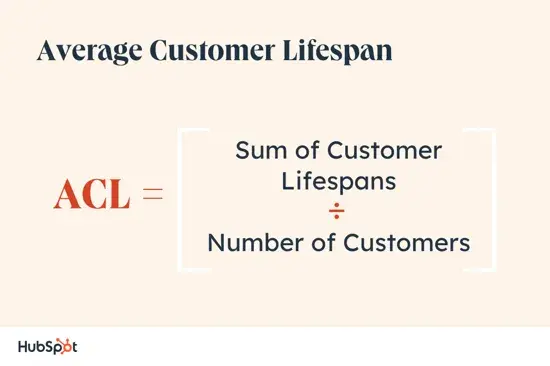
You'll need excellent data management for this figure, and make sure you don't have duplicate accounts in your data.
Average customer lifespan is useful when calculating CLV. This is because it supports predictions on how long customer relationships will last with data. This helps you make more informed budgeting and resourcing decisions. You can also figure out the ROI for customer acquisition and optimize marketing strategies.
Average Customer Lifespan Challenges
Calculating average customer lifespan can be tough because:
- Accurate customer lifecycle tracking needs a robust data management system.
- Different customer segments and subgroups can skew lifespan predictions.
- Limited customer data or short relationships lead to projections that don't align with actual customer behavior.
Tips for Calculating Average Customer Lifespan
I recommend using a reliable customer service software to track the customer lifecycle. Be sure to include data from different sources and platforms to create a full view of the customer journey. You can then and analyze data at each stage to track engagement and retention.
Customer Acquisition Cost
Customer acquisition cost is not a factor in most CLV formulas, but it can be useful to include in a customer lifetime value analysis. Comparing how much it costs to acquire a customer with their lifetime value to the business, you can figure out how to:
- Decide how effective marketing and sales strategies are.
- Distribute resources wisely.
- Find fitting opportunities to improve customer retention and acquisition.
Check out this guide to learn more about customer acquisition cost (CAC). Then, review these tips for analyzing your CAC to LTV ratio.
Customer Lifetime Value Example
It’s time to practice! To help make CLV tangible, I created an example for a fictional coffee shop — Jitterbug. By following the steps listed above, we can use this information to calculate the average lifetime value of a customer for the store.
Follow Along with HubSpot's CLV Calculator Template
1. Calculate the average purchase value.

Let’s say I monitor the behavior of five Jitter Bug customers. My first step is to see how much money they each spend in one average transaction. For example, if I went to Jitterbug three times and spent nine dollars total, my average purchase value would be three dollars.
Once I calculate the average purchase value for one customer, I can repeat the process for the other five. The numbers in the image above represent that spent. After that, I add each average together, and divide that value by the number of customers surveyed (five) to get the average purchase value.
- $6.34 + $9.78 + $ 5.21 + $10.55 + $7.89 = $39.77
- $39.77/5 = $7.95 average value purchase.
2. Calculate the average purchase frequency rate.
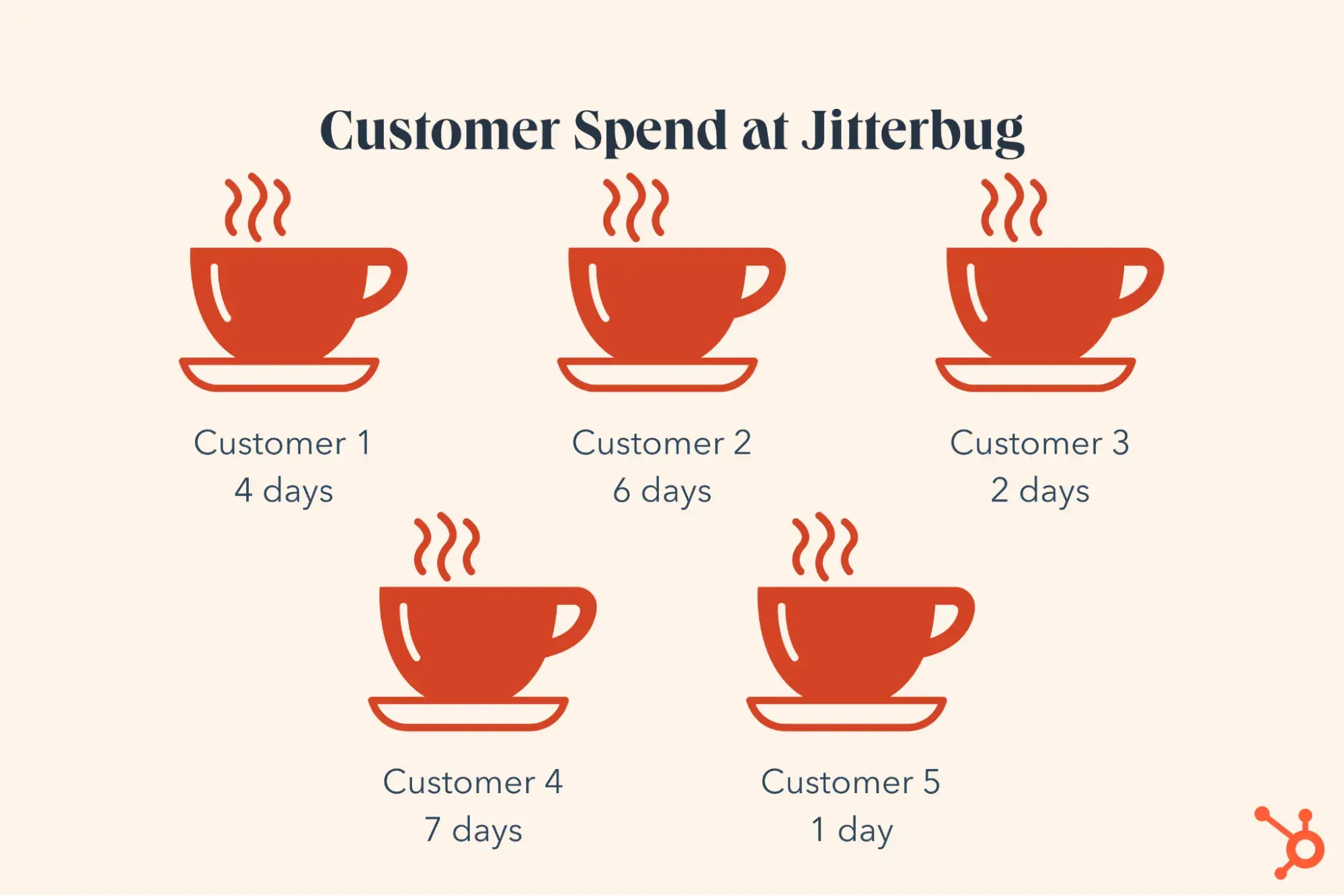
Now, I need to know how many visits the average customer makes to Jitterbug within a week. I’ll use the numbers for the visitors above and divide the value by five customers. This makes our average purchase frequency rate 4.
- 4 + 6 + 2 + 7 + 1 = 20
- 20/5 = 4 visits a week
3. Calculate the average customer's value.
Now that I know what the average customer spends and how many times they visit in a week, I can determine their customer value. To do this, I have to look at all five customers individually and then multiply their average purchase value by their average purchase frequency rate.
- Customer 1: $6.34 x 4 = $25.36
- Customer 2: $9.78 x 6 = $58.68
- Customer 3: $5.21 x 2 = $10.42
- Customer 4: $10.55 x 7 = $73.85
- Customer 5: $7.89 x 1 = $7.89
- total spend / 5 customers = $35.24
This lets me know how much revenue the customer is worth to Jitterbug within a week.
Once I repeat this calculation for all five customers, I average their values to get the average customer's value of $35.24.
4. Calculate the average customer's lifetime span.
If we were to calculate Jitterbug’s average customer lifespan, we would have to look at the number of years each customer frequented the shop. For this example, I’ll say that value is 2.3 years.
If you don't have years to wait and verify that number, you can estimate customer lifespan by dividing 1 by your churn rate percentage.
5. Calculate your customer's lifetime value.
Once I have determined the average customer value and the average customer lifespan, I can use this data to calculate CLTV.
In this case, I first need to multiply the average customer value by 52. Since I measured customers on their weekly habits, we need to multiply their customer value by 52 weeks in a year to reflect an annual average.
After that, multiply this number by the customer lifespan value (2.3) to get CLTV.
- 52 x $35.24 x 2.3 = $4,214.70
For Jitterbug customers, the CLV turns out to be $4,214.70.
Tips to Increase Customer LTV
1. Optimize your onboarding process.
Customer onboarding is the process of bringing your customers up to speed with your brand — what you do, why it matters, and why they should stick around. The result? You need to stand out while making this process straightforward. To make the most of your onboarding process, consider the following.
Use customer data to personalize onboarding.
Personalization isn’t just for the pre-sales stage. 72% of SaaS customers expect a personalized experience post-sale. You can offer curated item selections or great deals and then follow up with email contacts to make sure what they've already bought lives up to expectations.
As you scale it can become more difficult to personalize. But with tools like HubSpot Service Hub, you can create personalized onboarding workflows to guide customers through the necessary steps. This custom experience can help them quickly understand your product or service and get value from it quickly.
Streamline onboarding with useful tools.
Use a knowledge base or live chat to help simplify onboarding. These features help customers easily find information and get quick support whenever they need it.
Collect customer feedback through surveys.
Connect after onboarding to get insights on their onboarding experience and find areas you can improve the customer experience with feedback.
Track key onboarding KPIs.
Collect and analyze service metrics such as customer activation rate, time to first interaction, customer retention rate, and repeat purchase rate. This data can help you enhance your onboarding process for increased CLV. With this data, you can also create specific strategies for your high-value customer segment that go into effect right when they enter into the post-sales cycle.
Why this works: Optimized onboarding processes work because they establish a framework for long-term customer relationships that help increase CLV over time. Effective onboarding accelerates a customer’s time-to-value. When a customer quickly sees how your product solves their problem, they’re more likely to keep using it.
Additionally, when customers are well-onboarded with their core product and seeing success, they’re more likely to be receptive to new features or upgrade offerings.
2. Increase your average order value.
One of the smartest ways to improve your CLV is to increase your average order value.
When a customer is about to check out, you can offer relevant complementary products to those they're about to buy.
Get inspired by these upsell and cross-sell examples.
Brands like Amazon and McDonald's use upsell and cross-sell methods extremely well. Amazon offers related products and bundles them into a group price, as depicted below.
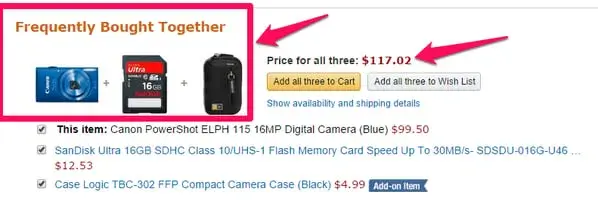
McDonald's, meanwhile, offers small add-ons — such as those delicious apple pies — that help boost overall CLV.
Personalize the buying experience.
Make your upsell and cross-sell experience as personalized as possible by using the data that you have. What products are your high-value customers primed to upgrade to? Are you promoting your “sticky” products or features to customers who don’t already have them?
Use your CLV findings to tailor the upsell/cross-sell experience for existing customers. Better yet, if you know the customer's value drivers or pain points, suggest products and features that will directly solve their unique problems.
Offer tiered pricing and other pricing choices.
Give new and current customers different product packages or service levels to choose from. This encourages customers to upgrade or opt for higher-priced options. For example, if you're a subscription-based company, you can increase your average order and customer lifetime value by encouraging your customers to switch to an annual billing cycle.
Create bundled pricing packages.
Combine complementary products and offer them at a discounted price. This not only inspires customers to buy more items, but it also increases their order value.
Create targeted promotions to increase order value.
Offer personalized discounts or incentives to specific customer groups. For example, you might encourage high-value or returning customers to make larger purchases with a targeted discount.
Don't forget to track customer retention rates and repeat purchase rates alongside CLV. This will help you connect the results of these strategies to long-term customer value.
Offer social proof.
When you’re promoting a feature or upgrade, make it easy for customers to find reviews or commentary from other customers. If they see other businesses having success with your product, it’s easier for them to envision their own success with it as well.
Why this works: Even a small increase in order value over time leads to increased CLV and overall revenue.
Consider the example of the McDonald‘s apple pie. While adding a $1(ish) item to each transaction isn’t much on its own, over time, these smaller amounts add up to substantive revenue and help increase total CLV.
3. Build long-lasting relationships.
Long-term customer relationships are based on trust, and building trust starts with authenticity. If a customer views your company as genuine and feels emotionally connected to your brand, they’re more likely to have a higher customer lifetime value and stay a customer longer.
If buyers believe that your company offers them the best prices on the products and services they want, they'll come back. But this is just the beginning.
With social media now a critical part of any branding and marketing efforts, customers want more than just a business-based relationship. They want to cultivate a personal connection that makes them feel like more than simply a road to better business ROI.
Send personalized outreach.
It's critical to engage with customers on your social media accounts with more than just canned advertising posts. For example, you could do some social sleuthing to discover more about your customers. Then, send them a (small) free gift that aligns with their interests.
Respond to customer comments and messages.
Reply to mentions, messages, comments, and more. This shows that you value input and are hoping to have meaningful conversations with your customers.
A ticketing system isn't just helpful for customer problem-solving. It can help you provide prompt and consistent support and engagement where your customers are. This is critical for building trust and mutual satisfaction.
Share authentic and relatable content.
Get genuine and go beyond canned advertising posts. Tell stories, share behind-the-scenes moments, and encourage user-generated content to build community. Don’t overlook the value of user-generated content in your efforts to create authenticity, as consumers are more likely to find user-generated content more authentic than traditional brand-created content.
Host interactive events or challenges.
You may not be able to connect with every customer in person. However, you can encourage active participation and build connections through online events.
Why this works: This works because you need to stand out from the crowd. Quick and easy ecommerce is now par for the course — if you can forge an actual connection with customers, you'll keep them coming back and increase your total CLV.
4. Create personalized digital experiences.
We’ve talked about personalization a few times so far, but it deserves its own category because of how truly impactful it can be. Digital personalization in marketing can be controversial, both because of data privacy and because when done poorly, it can feel “creepy” to a prospect.
But, when done properly, utilizing data to create recommendations for customers that are tailored to helping them solve a problem can actually generate trust and loyalty.
Data shows that personalization is especially effective at driving repeat engagement and loyalty over time, and research by McKinsey shows that personalization drives a 10 to 15 percent revenue lift. The better a company becomes in utilizing data to grow customer knowledge and intimacy, the greater the returns.
Personalize your new customer acquisition.
Your CLV data provides you with key characteristics about the customers who spend the most and stay the longest with you. You should use that data to tailor your marketing campaigns so that you’re targeting the right kind of prospects.
This helps streamline your marketing spend thus reducing the cost of acquiring new customers, and it ensures you’re bringing in customers who will in turn stay and grow their account with you.
Tailor your upsell/cross-sell motion.
You’ve already identified and segmented your high-value customers, and we know that they’re likely to spend more and stay longer with your company. Now, you need to create hyper-personalized digital experiences for this segment to engage them, support them, and make them feel special.
You could try running special promotions or discounts, creating exclusive virtual events for them to attend, or giving them sneak peeks and special access to new products and features. Leverage a variety of channels like chat, in-app notifications, video, email and events to engage this audience.
Apply the insights you find in your CLV data to give this segment a unique experience that feels like you’re helping them solve a problem that you know they have, versus trying to sell them something they may not need.
Share relevant self-serve support and education.
Once your customers feel comfortable with their current purchase and they start to see results, they’re more likely to consider your suggestions for new products and features. Consider making the self-service process feel more tailored to their individual needs.
You could leverage user data to create tailored content, offer targeted learning paths, suggest next steps based on their current feature adoption status, and recommend articles based on their recent KBA searches.
5. Listen and collect feedback.
Sometimes, it's better to listen than talk. Customers often have good advice on how you could improve business practices to better serve their needs — and you can increase CLV by taking it.
Ask for feedback.
Hopefully, you’re already surveying customers to measure NPS, CSAT, or other relevant customer satisfaction metrics, but if not — you should definitely start.
NPS is typically designed to measure a customer’s overall sentiment about a brand or product. When NPS includes open-ended feedback, you’re able to glean even more insight into what customers love, dislike, or feel neutral about with your product.
CSAT is designed to measure a customer’s satisfaction with your business, purchase or an interaction. CSAT surveys are typically short, simple and generate good response rates because they’re easy to complete. Measuring CSAT is another good way to gain insight into what you can improve within the customer experience to drive higher customer lifetime value.
Lastly, if you haven’t completed a churn analysis recently, I recommend running one. This data surfaces themes and critical insights into why your customers churn, which in turn can help inform your product and customer experience strategy. You can use these insights to make changes that ultimately improve your customer lifetime value.
Analyze and rank customer suggestions.
Let the customer guide you. You could create a poll on new product or service ideas and see what your customer base thinks. Make sure you don't lock them into a specific set of choices. Instead, give them room to add their own ideas that could help make things better.
And don't stop at surveys. You can collect reviews, social media, and customer support interactions too. Then, review this feedback for common themes and prioritize what you want to improve.
HubSpot's customer feedback tools make it easy to seek input and suggestions from your customers. While not every customer will engage, those who do will often have good advice and can end up being some of your most loyal customers.
Loop in relevant stakeholders for decision-making processes.
Bring in stakeholders from different departments to review, discuss, and evaluate customer feedback. Not every suggestion will be realistic for your business. But the more you can honor the needs of your customers, the more likely you are to boost CLV.
Service Hub's collaboration and team management features streamline knowledge sharing. This encourages internal collaboration.
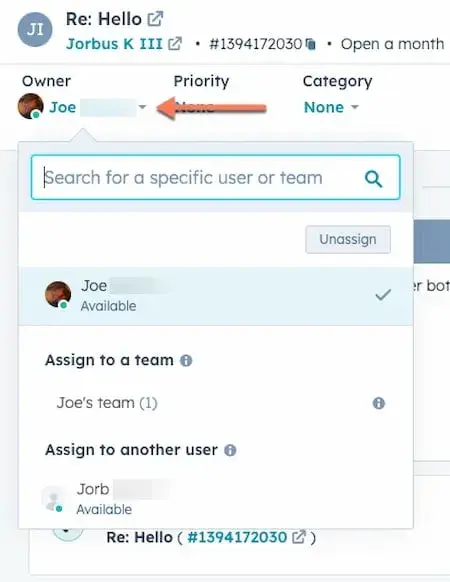
Communicate changes you've made based on customer advice.
Give credit where credit is due. If a customer comes up with a good idea, credit them for the help. You may also want to consider sending them something as a token of appreciation.
Why this works: This works because it shows customers that you want their feedback and you're willing to listen. Additionally, customers feel more connected to your brand and the product when they feel like they’re being heard and they’re able to influence change.
6. Empower easy connections.
Customers won't wait around for your brand to connect with them or answer their questions. 2023 HubSpot data says that 66% of consumers want a response to emails from customer service in five minutes or less.
While this isn't always possible, businesses can put practices in place to shorten response times and empower easy connections.
Use technology such as chatbots or automated support systems.
When you can, offer instant responses to common customer queries. Tools like live chat, chatbots, and email integrations can help streamline the connection process. They can also offer immediate assistance to meet high customer expectations.
We’ve talked a lot about segmenting your high-value customers so far. Consider giving them a priority experience with chat by leveraging that segmentation. You could create a personalized experience to greet them by first name or company name, or you can give them a fast track to support via live chat.
Create self-service resources and knowledge bases.
Make it simple for customers to find answers to their questions independently. You can accomplish this with a knowledge base, customer portal, and other self-serve resources. This empowers them to find information quickly.
Self-service also reduces the need for direct interactions while creating a connection. Where possible, consider personalizing this experience so customers are given suggested topics based on recent searches or based on the products they currently have.
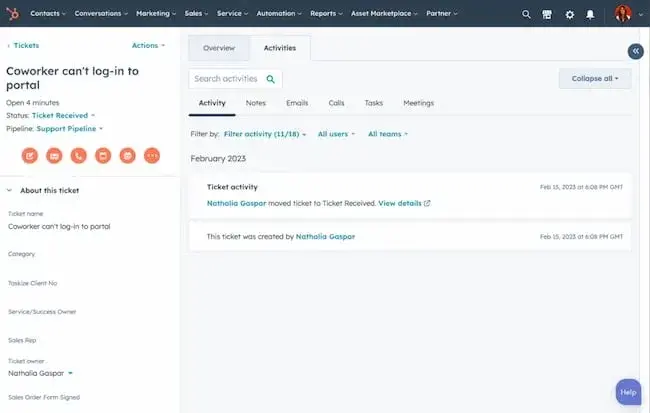
Be proactive on customer feedback channels.
Equip your customer success team with tools and technology to monitor and respond to customer comments or concerns through different channels, such as social media and online reviews. This can help your brand jumpstart the connection process.
Why this works: CLV is now driven by relationships, and relationships require ongoing connection.
While five-minute email response times may be out of reach, the easier you make it for customers to connect with your brand, the more connected they‘ll feel overall. And the more likely they’ll come back to spend more money.
7. Improve your customer service.
According to HubSpot research, 93% of customers are likely to make repeat purchases with companies that offer excellent customer service. So, if you want to improve your customer lifetime value, you should pay attention to your customer service and look for ways to make it excellent.
Here are just a few ways you can improve your customer service.
Use omni-channel customer support.
Make sure your customer support experience is seamless and consistent. To do this, offer support across multiple channels, such as phone, email, live chat, and social media platforms. This makes it easy for customers to reach out through their preferred channel.
HubSpot's service automation features can help you automate support tasks. When you reduce manual outreach, like routine emails, it gives you more time to focus on resolving complex issues. This can help your team offer higher-quality service to your customers.
Add personalized services.
Use customer data insights to personalize the experience for each customer. This information can help your team make custom recommendations, offers, and product suggestions.
Offer a proper return and refund policy.
Create a clear and fair return or refund policy that shows your commitment to customer satisfaction. Keep in mind, any great refund or return process should be hassle-free.
Enhance customer service training.
Make sure your business has a training program in place. Great service training should educate employees on your products, best practices, and problem-solving. Training should also include active listening, empathy, and effective communication techniques.
Add customer service feedback systems.
Sending customer surveys is a great idea, but it won‘t help much if you don’t have a process in place to analyze your data. Create processes to review customer feedback regularly. This can help you notice patterns and address any recurring issues in your customer journey.
Why this works: It's simple. The better your customer service is, the more customers feel valued by your brand for more than their purchases. Customers are willing to spend more with a brand after having a great experience, and companies that incorporate better digital experiences are more profitable.
If you stand behind your products with substantive return and refund policies, it communicates to customers that your priority is quality and satisfaction, not overall sales volume.
The result? Increased CLV.
The Benefit of Customer Lifetime Value
Customer lifetime value is an incredibly useful metric. Once you know how to calculate lifetime value, you'll know which customers spend the most at your business and which ones will remain loyal to you for the longest amount of time. From there, you can create strategies to engage and grow that segment of customers, resulting in higher revenue for your business.
Use the formulas and model provided above and start calculating CLTV for your business today.
Editor's note: This post was originally published in May 2021 and has been updated for comprehensiveness.
Customer Loyalty
.png?width=112&height=112&name=Image%20Hackathon%20%E2%80%93%20Vertical%20(85).png)

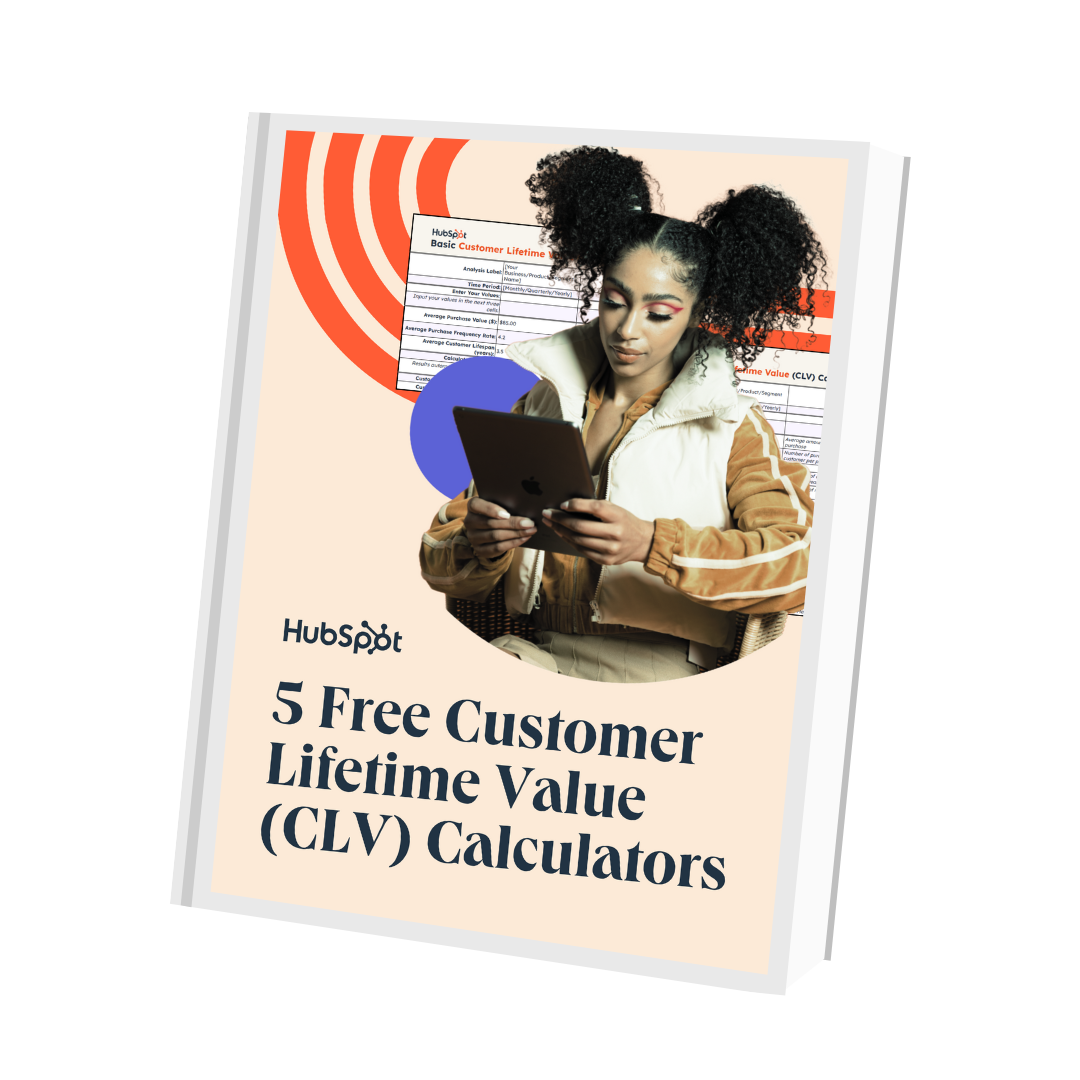

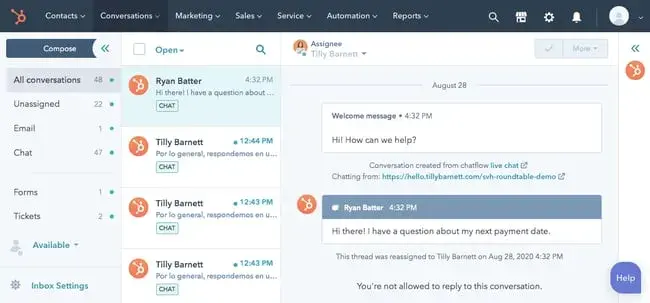

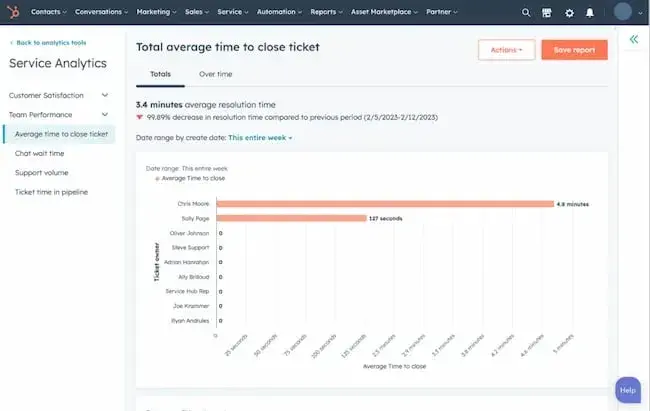
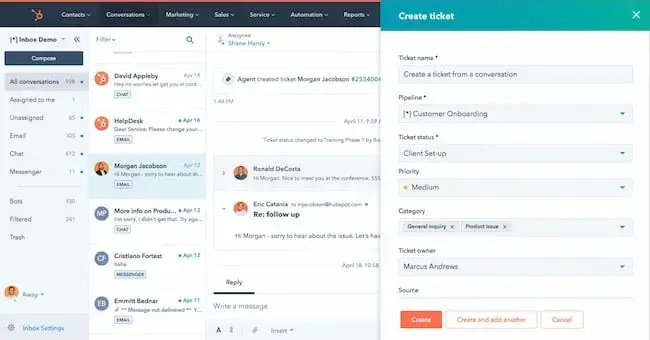
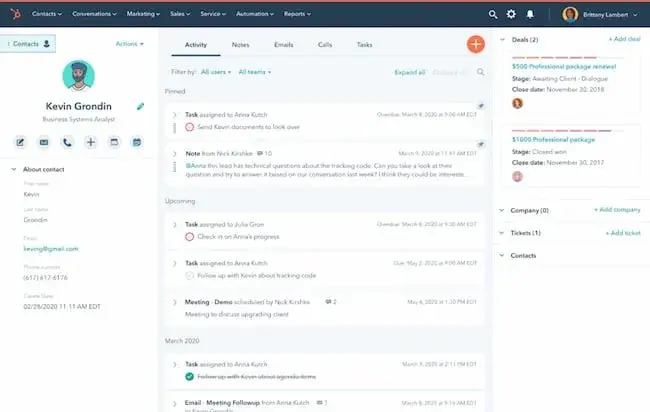
.png)
-4.png)
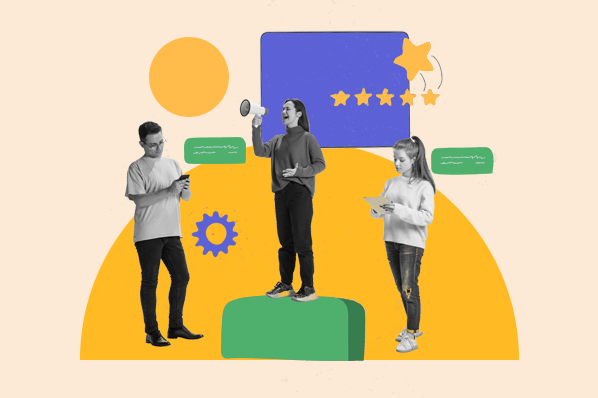

-1.webp)


![How & Why Loyalty Punch Cards Attract Customers to Your Brand [+ Examples]](https://53.fs1.hubspotusercontent-na1.net/hubfs/53/customer-loyalty-punch-card_6.webp)


